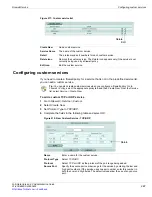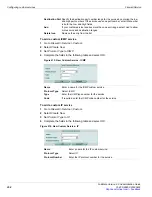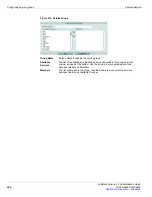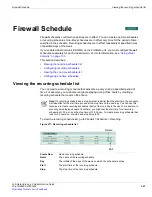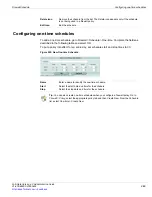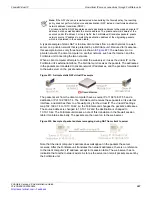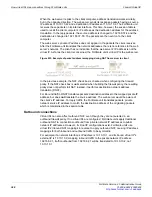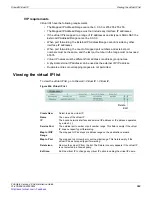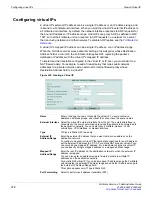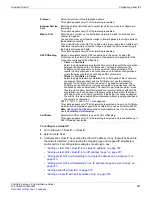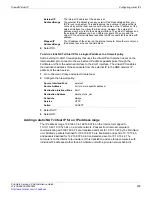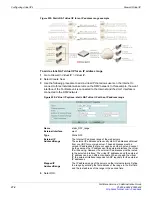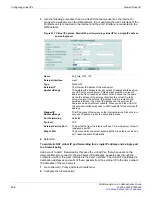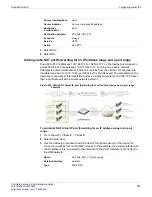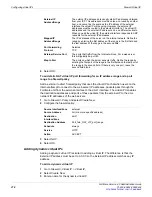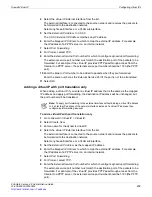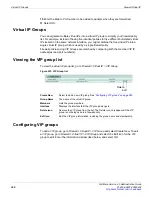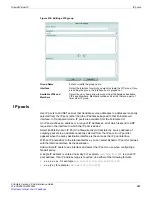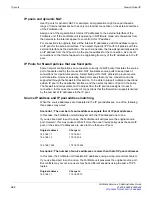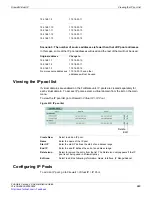
How virtual IPs map connections through FortiGate units
Firewall Virtual IP
FortiGate Version 4.0 Administration Guide
368
01-400-89802-20090424
When the web server replies to the client computer, address translation works similarly,
but in the opposite direction. The web server sends its response packets having a source
IP address of 10.10.10.42 and a destination IP address of 10.10.10.2. The FortiGate unit
receives these packets on its internal interface. This time, however, the session table is
used to recall the client computer’s IP address as the destination address for the address
translation. In the reply packets, the source address is changed to 192.168.37.4 and the
destination is changed to 192.168.37.55. The packets are then sent on to the client
computer.
The web server’s private IP address does not appear in the packets the client receives.
After the FortiGate unit translates the network addresses, there is no reference to the web
server’s network. The client has no indication that the web server’s IP address is not the
virtual IP. As far as the client is concerned, the FortiGate unit’s virtual IP is the web server.
Figure 223: Example of packet address remapping during NAT from server to client
In the previous example, the NAT check box is checked when configuring the firewall
policy. If the NAT check box is
not
selected when building the firewall policy, the resulting
policy does not perform full NAT; instead, it performs destination network address
translation (DNAT).
For inbound traffic, DNAT translates packets’ destination address to the mapped private IP
address, but does
not
translate the source address. The web server would be aware of
the client’s IP address. For reply traffic, the FortiGate unit translates packets’ private
network source IP address to match the destination address of the originating packets,
which is maintained in the session table.
Outbound connections
Virtual IPs can also affect outbound NAT, even though they are not selected in an
outbound firewall policy. If no virtual IPs are configured, FortiGate units apply traditional
outbound NAT to connections outbound from private network IP addresses to public
network IP addresses. However, if virtual IP configurations exist, FortiGate units use
virtual IPs’ inbound NAT mappings in reverse to apply outbound NAT, causing IP address
mappings for both inbound and outbound traffic to be symmetric.
For example, if a network interface’s IP address is 10.10.10.1, and its bound virtual IP’s
external IP is 10.10.10.2, mapping inbound traffic to the private network IP address
192.168.2.1, traffic outbound from 192.168.2.1 will be translated to 10.10.10.2, not
10.10.10.1
Summary of Contents for Gate 60D
Page 705: ...www fortinet com...
Page 706: ...www fortinet com...




